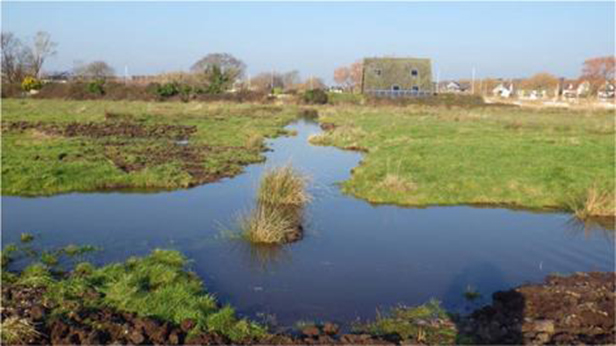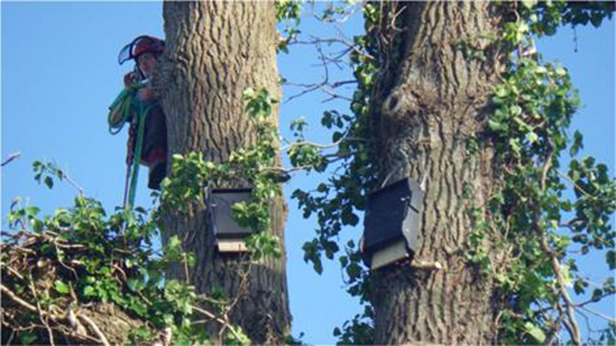
Some of the restored ditches and channels that are helping to boost wildlife at the Christchurch Harbour Site of Special Scientific Interest
The Environment Agency has completed works to improve flood defences at Wick near Christchurch.
Contractors were busy over winter, raising and extending existing flood embankments at Wick Farm. Improvements to earlier defences, built in the 1990s, will protect properties from tidal flooding from the nearby River Stour say the Environment Agency. A section of the road in Wick Lane has been raised to prevent flood water from getting in behind the new defence.
Several environmental improvements have also been carried out as part of the scheme, in partnership with Bournemouth Borough Council and Natural England.
“Ditches in the adjacent Christchurch Harbour Site of Special Scientific Interest (SSSI) have been restored to encourage wading birds such as redshank, curlew and lapwing. They like to feed in the shallow ditch water and muddy margins,” said Sarah Guest, biodiversity officer for the Environment Agency.

Bat boxes put up at Wick near Bournemouth as part of environmental improvements carried out during a local flood defence scheme
Mark Goldingay, the Environment Agency project manger said, “We have replanted the site with a variety of native trees and shrubs to provide berries, seeds and nectar for butterflies and other insects and also put up bat boxes in trees around the site.”
He explained that timber from trees that had to be felled to make way for the flood bank hasn’t gone to waste. “Logs have been used to create a refuge for reptiles, amphibians and insects and wood chippings have been used in Bournemouth Borough Council’s biomass boiler at King’s Park to heat the glasshouses or for mulching shrub borders in the borough.
“Dead and decaying wood provides a vitally important habitat for wildlife, especially the larvae of stag beetles and Bournemouth is a hotspot for this huge beetle. The larvae can munch on deadwood for up to six years before emerging.
“We hope the environmental improvements, which were developed with Natural England and Bournemouth Borough Council, will enhance the outdoor experience for people using this area,” added Mark.






